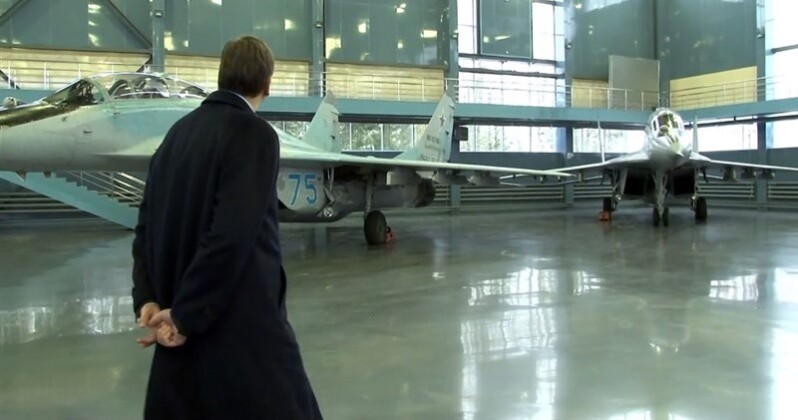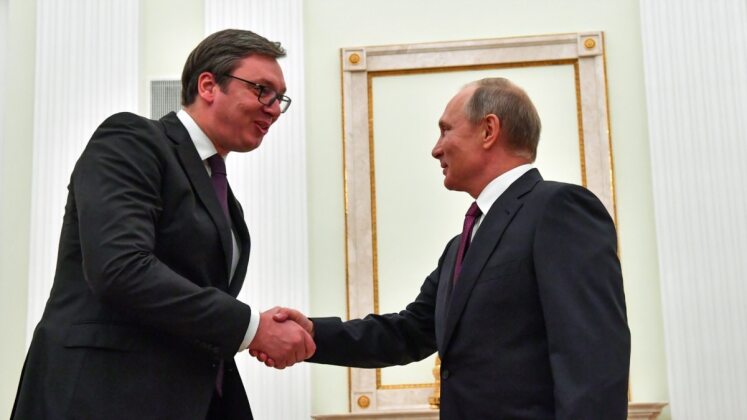News
Is Serbia Helping NATO Arm Ukraine Against Russia
Since the outbreak of the Russian-Ukrainian War in February 2022 Serbia has come under growing pressure from across the Western world to align its policies with those of NATO member states and impose economic sanctions on Russia. This followed years of Western criticisms of Belgrade’s defence ties with Russia, which included purchases of small quantities of equipment such as second hand T-72 tanks, receipt of MiG-29 fighters as aid from both Russia and Belarus, and participation in limited joint exercises with the Russian Military. The country was nevertheless deterred from making major acquisitions from Russia such as post fourth generation fighter aircraft or long range air defence systems, with a speculated acquisition of the S-300 or S-400 missile systems never materialising as Belgrade was threatened with sanctions. The country instead placed orders for the Chinese HQ-22 air defence system, which was also criticised, albeit less strongly, from across the West. Although Serb public opinion has consistently strongly supported close ties with Russia, with volunteers from the country travelling to the country to fight in the campaign in Ukraine in considerable numbers, Serbia itself has since the disintegration of Yugoslavia depended heavily on trade with the European Union for its economic wellbeing, which has made it susceptible to Western pressure over its ties to Moscow.

Despite its position between the West and Russia, Serbia has according to Western sources increasingly turned a blind eye to its arms exports being diverted through third parties to Ukraine. Demand for Soviet compatible equipment, which Serbia first began producing in the Yugoslav era, has reportedly skyrocketed as a result of the conflict. Leaked American intelligence documents dated April 12, and viewed by Reuters, reported confirmed that Belgrade may have also more directly assented to provision of lethal aid to the Ukrainian war effort. The Financial Times in the first week of June referred to a “pipeline funnelling Serb ammunition to the Ukrainian front,” which it reported led Western countries to reduce pressure on Serbia over the issue of its breakaway province of Kosovo which the large majority of Western states have for close to 15 years recognised as an independent state.
As argued by U.S. ambassador to Belgrade, Christopher Hill, which was interpreted to be referring to the softening of the Western position on Kosovo in exchange for Serbian support for the Ukrainian war effort: “Ukraine is absolutely critical and we are at a point where all hands need to be on deck… When people are on board, relations get better.” Demand for Serbian arms became particularly high as Western NATO members, particularly those in Europe, seriously depleted their weapons stocks and increasingly failed to keep up with the rate at which war materials were being expended or destroyed on the Ukrainian front, which led several Western countries most notably Britain to look to black markets and third party suppliers across much of the world. The fact that armaments produced in some of Ukraine’s key supporters, most notably Germany and Italy, have very frequently suffered from severe qualitative deficiencies, only made this demand more acute.

Tacitly allowing arms exports to Ukraine may have been seen as a means to both seriously alleviate Western pressure on Belgrade, while also avoiding the public backlash that would likely result should it more openly support Western Bloc objectives such as by sanctioning Russia. Serbian President Aleksandar Vucic notably did not confirm or deny that such arms transfers were ongoing, but denied that it was intentional, stating: “I’m not a fool. I am aware that some of the arms might end up in Ukraine… Is it possible that it’s happening? I have no doubts that it might happen. What is the alternative for us? Not to produce it? Not to sell it?” Vucic previously stated in 2022 that demand for Serbian armaments were soaring, with speculation rising at the time that the war in Ukraine could be a leading cause of this. The kinds of armaments Serbia can produce are nevertheless very limited compared to the Cold War era, and while the country has notably exported tanks to Pakistan in recent years these were T-55s built during the Cold War and refurbished and modernised domestically. Yugoslavia’s military industrial base was formerly among the leaders in Europe before the state’s disintegration led to the cancellation of most major weapons programs and ended the production of multiple systems such as the iconic M-84 tank – an enhanced T-72 variant.












